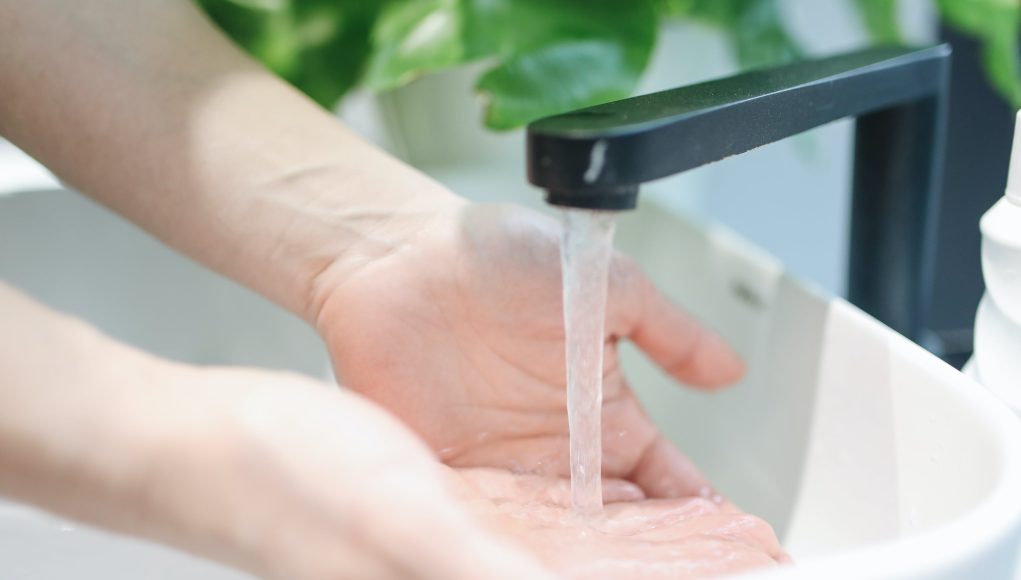The sooner the problem is found and fixed, the better, as it could lead to more damage the longer it stays unfixed.
Here, we’ll take a look at reasons why the leaks may appear in your piping in the first place and then offer some solutions to fix them. The following tips and solutions are DIY-friendly and quick fixes for the handy homeowner.
What Causes Leaks (& How To Fix Them)
Before we begin taking a look at the different solutions to fixing a leaky pipe, it’s crucial to understand the problem itself. Leaks can appear over time from wear and tear of the pipes themself or loose connections.
Now that we have a basic idea of how leaks appear let’s look at some problems and the solutions to fixing them. We’ll also equip you with the detective skills to identify the type of leak you’re battling.
The most common reason a leak appears is a loose connection. This is an easy problem to fix. Just locate where water is accumulating and dripping and check the connections along the way to see which has loosened. Take a wrench, tighten the loose socket, and dry the pipes with a paper towel. Wait for a few minutes and see if there is moisture or if the pipe is wet. Suppose the water is gone. Then the job is done. If not, we move on to the next part.
2. Replacing Washers and Gaskets
Worn-out washers and gaskets often lie at the heart of a leaking pipe’s betrayal.
In this segment, we’ll show you how to identify and replace these unsung heroes of plumbing. Delve into the world of these tiny but critical components, learning which type suits your needs and how to ensure a watertight seal. Start by turning off the main water.
After that, disassemble the connection and take a look at the Washer and or gasket. If it is worn out, take the worn-out piece and replace it with a similar one. Take the old one as an example for the replacement.
When the situation needs a quick or temporary fix, epoxy putty comes to the rescue. This versatile material can staunch the flow until a more permanent solution can be implemented. Join us as we guide you through the process of proper preparation and application, all while being aware of its limitations. Epoxy putty acts as a seal or patch compound that mends various surfaces such as plastics, glass, wood, steel, and metal. Its nontoxic material resists shrinkage and can be used on both wet and dry surfaces.
Epoxy putty usually consists of two compounds: a resin and a substance hardener with a moldable soft consistency that is similar to clay. This allows the epoxy putty to fill any holes or cracks by gently pushing the resulting adhesive into the damaged surface.
The Wpoxy putty will form a waterproof seal to temporarily stop leaks in pipes as well as cracks in cabinets, tiles or masonry. It can also be applied to plumbing material to create watertight seals, like copper or brass and other non-ferrous metals.
4. Pipe Clamps or Pipe Sleeves
When a tight grip is needed to fend off leaks, pipe clamps or sleeves step up as sturdy sentinels. We’ll walk you through the selection process, helping you pick the right size and type for your pipe. Proper installation is key, and we’ve got you covered with precise instructions. It may change due to the type of pipe clamp you use. However, the basics are almost the same.
There are three steps to follow:
1. Slide the clamp onto the pipe. The clamping face must be facing the threads.
2. Slide the pipe into the threaded clamp and screw the clamp until it is tight.
3. Align the sliding clamp and ensure that both clamps are aligned.
What size pipe clamp do you need?
The size of the pipe clamp you need to use clearly depends on the size of the pipe. First, you need to ensure that you know the size of the pipe. The pipe sizes are mostly measured in Nominal Bore or Outer Diameter. Nominal Bore is defined as the hollow section of a pipe.
For minor leaks at threaded joints, Teflon tape can be your trusty ally. We’ll provide a comprehensive guide on how to apply this tape with finesse. Delve into the art of wrapping threads, ensuring a secure and leak-free connection.
Facing the threaded male end of the fitting towards you, wrap the Teflon clockwise. Begin wrapping it from the bottom and work your way up the threads. Cover at least half the width of the tape each time you wrap it around the fitting. Continue wrapping until you reach the end of the pipe.
Teflon tape can be used just about anywhere where you have threads.
6. Regular Inspection and Maintenance
Regularly inspecting your plumbing and property can prevent long-term damage. Regular inspections are a proactive defence to prevent leaks in the future. These tips will let you know what to look for during routine maintenance checks and how to avoid problems. To prevent leaks in the future, you should check your plumbing regularly. You should immediately fix any damp spots or wet pipes you find.
7. When to Call a Professional Plumber
DIY fixes are a great way to save money and feel like you contribute personally to your home. There comes a point when you need the help of qualified plumbing services.
Knowing when to call a plumber is great knowledge. Calling a professional plumber will not be easy on your budget, but it will remove any guesswork and will lower any damage to your plumbing and property.
Conclusion
As we conclude our exploration into the realm of leaking pipes beneath your sink, remember that knowledge is your greatest weapon.
Armed with the right strategies, you can turn the tide on leaks, preventing further damage and inconvenience. May your plumbing endeavours be met with success, and your pipes flow freely once more.
















